‘Train to Busan’: Freshest Zombies in Years
By Paige Lyman
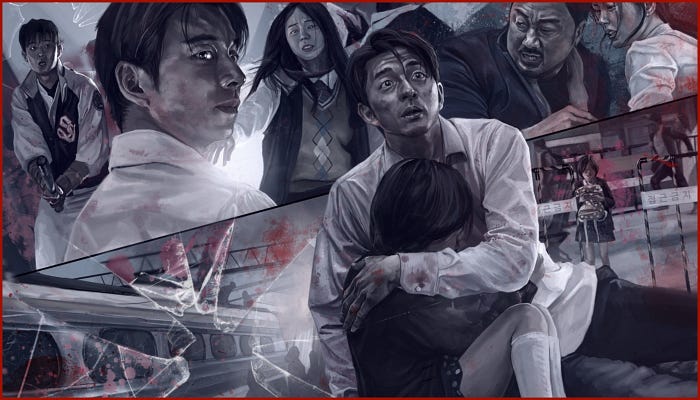
Warning
The following article contains a major spoiler.
In 2016, a breath of fresh air in the realm of zombie films was released. Train to Busan, directed by Yeon Sang-ho, opened to 11 million recorded moviegoers in South Korea and delivered a striking zombie movie on the tail end of a rather saturated period of zombie media. From The Walking Dead’s (2010-Present) years of popularity on AMC to more B-movies like 13 Eerie (2013), there was a huge uptick in zombie shows and movies during the 2010s that brought both old and new ideas into the genre. But Train to Busan went out of its way to really lay out tropes that we’re familiar with in a zombie film and, at the same time, offered some fresh takes on both characters and setting.
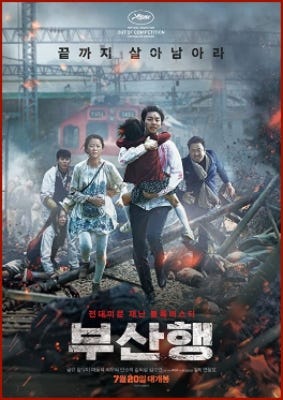
The first thing we can look at in the film comes directly to us from the title. The setting of the film is primarily on a train with one stop at a train station sprinkled in about halfway through. A common setting in zombie media is often a large city, or perhaps somewhere rural like a farm, or maybe in large places where people gather like an amusement park or a mall. These settings are a staple in zombie media and help to ground the horror of zombies in familiar places we all know. Train to Busan utilizes an everyday setting much in the same way that other zombie films do. Trains are a typical mass transit that millions of people take all over the world. Having a small outbreak occur on the train apart from the larger one happening in South Korea during the movie, we as viewers have a unique take on the outbreak.

The outbreak begins after one infected woman follows a homeless man, Jong-gil, onto the train. From there, the setting really helps to aid in the panic and fear among the train passengers. Unlike being outside in a large city or open area, the train is small and confined. There are only a few places to go to get away from the zombies as they begin to take over the train. Train to Busan expertly makes use of this closed space to really showcase the horror the characters are going through, and it assists in getting to know the characters more intimately as well.
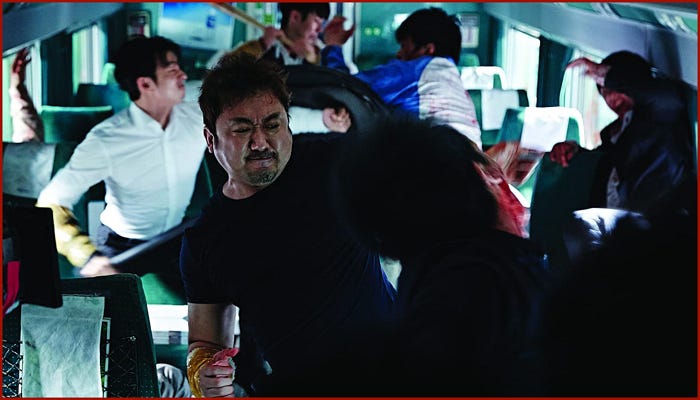
Character archetypes in movies are something we all know about whether they’re in zombie films or not. You have the hero, the caregiver, the innocent one, the stoner, etc. Many of these common characters fulfill specific roles in a story — they pop up in zombie movies all the time. In a similar fashion to how it spins a unique story from within an everyday setting, Train to Busan also does this with many of the characters that we follow for the duration of the movie.
I’d like to focus on two: Seok-woo (played by Gong Yoo), the workaholic protagonist who is a somewhat inattentive father, and Su-an (played by Kim Su-an), Seok-woo’s 6-year-old daughter who seems a little wise beyond her years. These two characters together represent some usual character archetypes that you’ll see in movies and Train to Busan utilized them expertly to get viewers invested in their stories. You come to care about what happens to these characters as the movie goes on, which is not something that I can say usually happens in zombie movies for me.
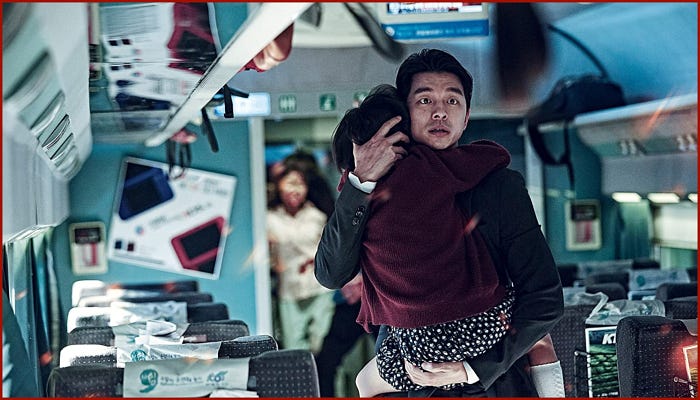
We follow these two characters from their ordinary lives. Seok-woo is a hedge fund manager and we instantly know he is a workaholic and not very connected to his daughter. While on the train, before the outbreak really starts, he’s on the phone with work while his daughter is left to her own devices for a bit. Su-an is your typical child character who’s a little quiet and reserved when we’re first introduced to her, and it’s clear her relationship with Seok-woo is strained.
The film shows us these characters’ lives in short bursts before and after the outbreak begins, really fleshing them out in the time that they’re given. Train to Busan uses the enclosed setting of the train to its advantage by really bringing out the character’s personalities. When you’re in a highly tense situation with not many places to go, things about yourself will come out. For example, Su-an and Seok-woo have a moment when the party is moving in between cars and Seok-woo talks with his daughter. He and Su-an have one of the last longer conversations in the movie where she tells her father that she learned a song for a school recital just for him that he ended up not attending. This conversation gives us a deeper look at the relationship the two have with each other and how they both feel about the missed moments they could have shared.
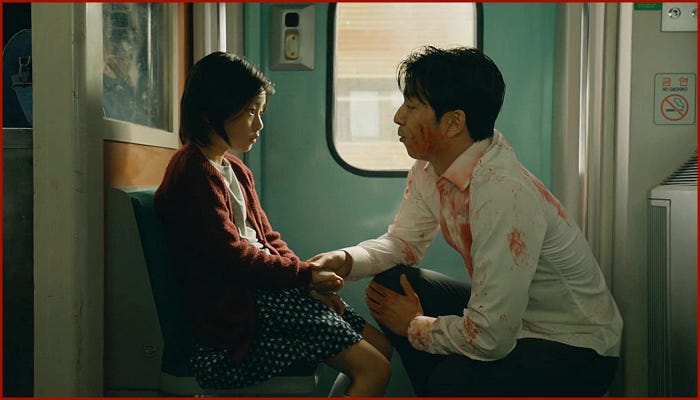
Seok-woo doesn’t survive until the end, ultimately sacrificing himself to save Su-an and Seong-kyeong (another character who has some great moments throughout the film played by Jung Yu-mi) from one final zombie. The relationship between Seok-woo and Su-an is certainly a standout in the film, and Train to Busan handles the strained father-daughter relationship in an almost beautiful way.
Train to Busan truly served as a breath of fresh air in zombie media: it offered compelling characters, unique takes on familiar tropes, and certainly didn’t hold back on the zombies themselves. It manages to blend fantastic-looking zombies with an interesting plot and characters that help pull you into the story. Seok-woo and Su-an are prime examples of what the film has to offer, as well as how unique takes in zombie films can leave a lasting impression. 🩸
About
Paige Lyman is a freelance writer who specializes in pop culture, film, video games, television, and related topics. Her writing has been featured on The Mary Sue, Women Write About Comics, Geek Girl Authority, Cultured Vultures, and Dear English Major. Visit her website at paigeyki.wordpress.com. Follow her on Twitter @tanosski.
Follow MANOR on Bluesky, Facebook, Instagram, Pinterest, Threads, TikTok, X, YouTube, and other sites via Linktree.
© 2020 Manor Entertainment LLC
